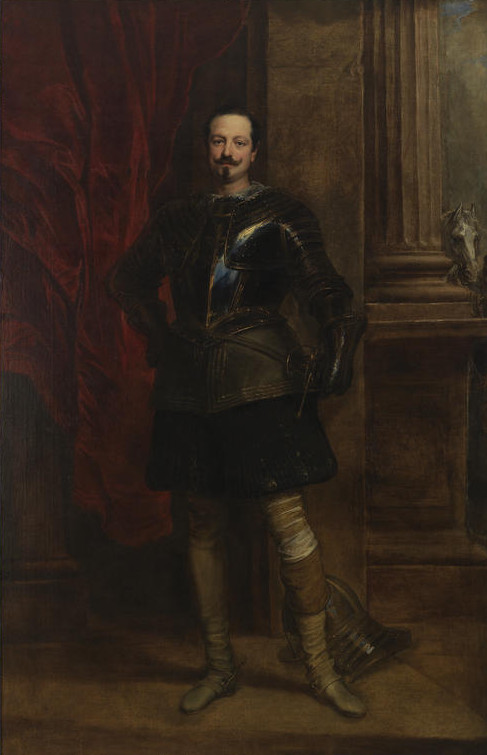We acknowledge the Traditional Owners of the land on which the Queensland Art Gallery | Gallery of Modern Art stands and recognise the creative contribution First Australians make to the art and culture of this country.

Anthony van Dyck / Flanders/England 1599–1641 / Portrait of Marchese Filippo Spinola c.1622–27 / Oil on canvas / 218.3 x 139.6cm / Purchased 1981. Queensland Art Gallery Foundation Dedicated 1998 to Sir George Fisher, CMG, inaugural President of the Foundation (1979–85) in recognition of his distinguished service / Collection: Queensland Art Gallery | Gallery of Modern Art
Anthony van DyckPortrait of Marchese Filippo Spinola c.1622–1627
On Display: QAG, Gallery 9
This painting is regarded as one of Anthony van Dyck’s masterpieces of portraiture made during his time in the Republic of Genoa. While the subject is referred to in the title as Filippo Spinola, the true identity of the figure is unknown.
Filippo Spinola was the son of the Genoese General Ambrogio Spinola, who was in the employ of Philip IV, King of Spain. He was the commander of the Spanish forces in the Netherlands during a long war between the two countries, which resulted in Ambrogio Spinola laying siege to the fortified Dutch city of Breda in 1624. However, further research into Genoese aristocratic families and commissioned portraits suggests that the figure in van Dyck’s painting may be of an earlier generation.
In this work, the confidence and authority of the military commander is communicated through his pose and the suggestion of action — his helmet is on the floor and his horse is being attended to by a page at the far right. The billowing red curtain adds elements of movement and grandeur.
Anthony van Dyck was one of the most extraordinary portrait painters of the seventeenth century, who influenced later generations of portrait painters in England, such as Thomas Gainsborough, Joshua Reynolds and John Singer Sargent.
Born in Antwerp in 1599, van Dyck worked in the studio workshop of Peter Paul Rubens from around 1618 to 1620. By the age of 21, he had established a reputation as a talented and successful painter. He travelled extensively in Italy, working in Venice, Genoa, Florence, Padua, Milan and Rome.
He remained in Italy for six years, completing many portrait commissions and some religious paintings. He was influenced by the Venetian artists of the past, including Tintoretto, Paolo Veronese and Titian.
Van Dyck’s oeuvre is usually divided into three periods, his first and second Flemish periods; his Italian period (1621–27), dominated by his stay in Genoa; and his remaining years (1632–41) spent in England, where he was knighted by King Charles I.
Discussion Questions
1. How do we know that the man in the painting is somebody important?
2. What visual elements or information in the portrait suggest power, privilege and wealth?
Classroom Activities
1. Collect photographs of important figures in society today (for example, politicians and religious leaders), and make a photo montage. Select a favourite figure from the montage and dress as that character. Ask a friend to photograph you and display the photograph alongside images from the rest of class. Consider how each student’s pose and facial expression affects your understanding of the character they’re portraying.
2. Using photography, drawing, painting or collage, create a full-length portrait reflecting distinguishing characteristics of a person you would like to represent. Think about the composition, the setting and the style of clothing. Use costumes and props to enhance the character and the mood you wish to create.